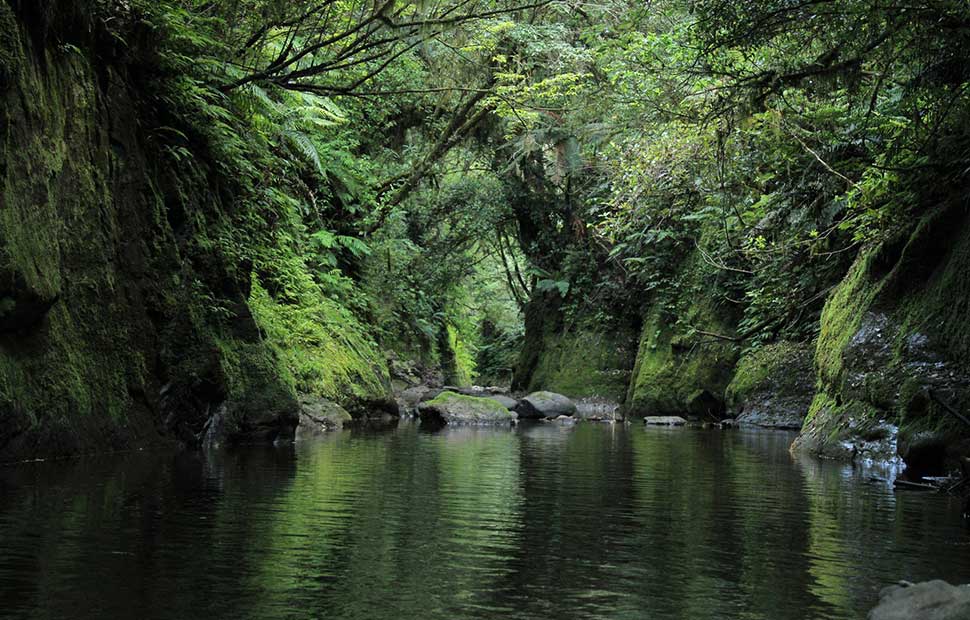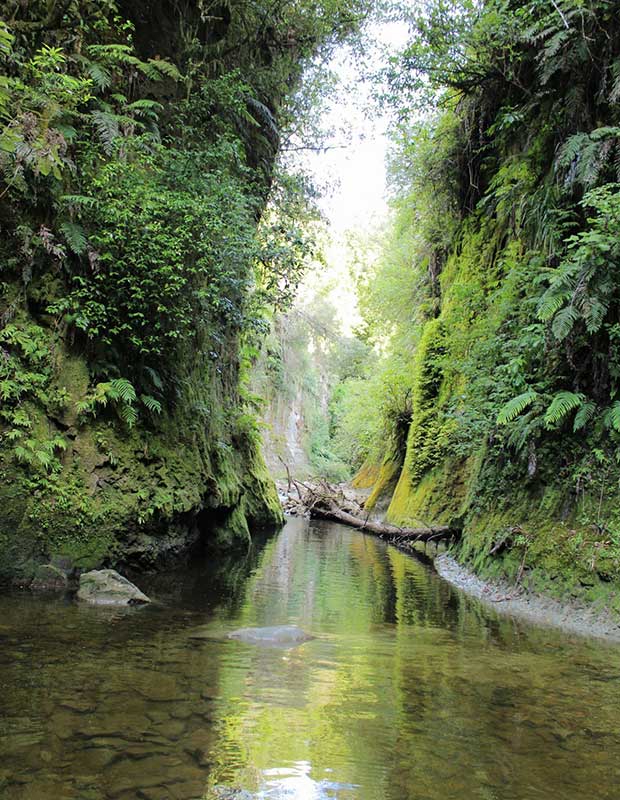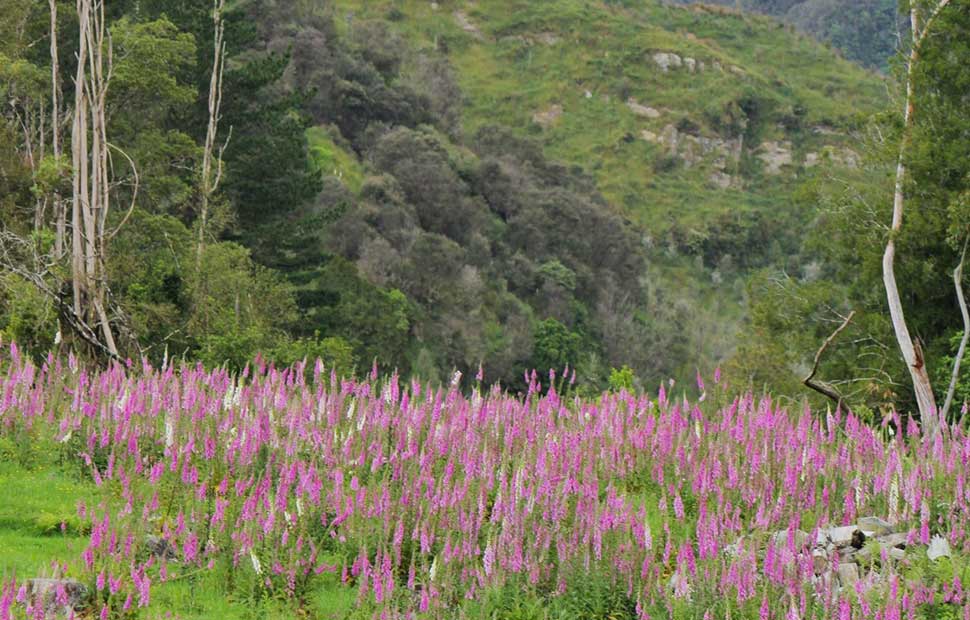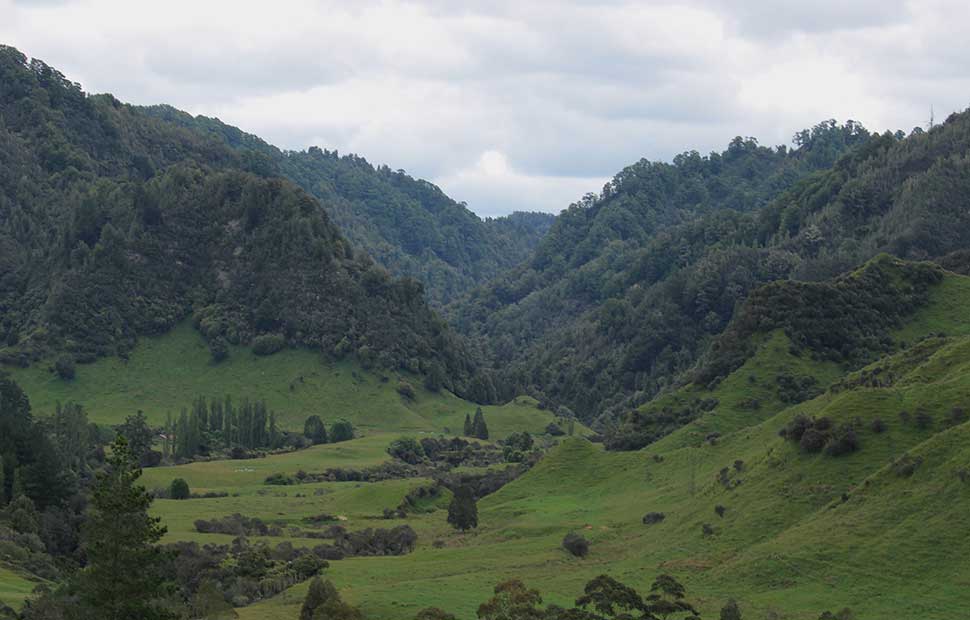
Rebecca Stewart: Following in the footsteps

Rebecca reflects on the struggles of those who lived on their block of land before her family.
Words: Rebecca Stewart Images: Summer Stewart
As a new year dawns, we have been thinking a lot about the people who walked this land before us. Our rugged valley was not lived in until the early 1900s. Its steep bush-clad hills run down to old river flats and plummet into a deep ravine. The ravine is like a tear through the heart of this valley, an almost impenetrable crevasse dividing the landscape: a reminder that our time here on this land is just fleeting in the great scheme of life. Nature is a force of great might and we are mere specks upon the surface of this ever-changing land.
We recently had to scale this ravine, forming a track where the sides were not so steep by pruning back the lush pikopiko fern, parataniwha, mahoe and kotukutuku. We cut steps into the earth so we would not slide down the almost vertical slope.
We emerge from the dappled shade of the bush into the welcoming light of the river surrounded by cliffs and towering trees perched precariously above. It’s a beautiful cool spot to be in summer with access to fishing, visiting the eels, swimming and kayaking. This area is wider than most and we see a broad swathe of the sky above us. Further down the river, the ravine narrows and the water deepens, flowing faster through the sheer walls of rock rising 30 metres above us.

The eels swim by unfazed by our intrusion into their sanctuary. One is large, about a metre long and fat. Gliding by, it reminds me of the tales told of a taniwha living in the small lake high in the hills above us. Perhaps this is partly why the Māori never lived in this valley, preferring instead to live on the shores of the great river 7km away. It is a beautiful landscape, though vaguely eerie in this ravine. An old remnant of a bridge lies partially embedded in the rocks, a reminder of storms long gone, of raging torrents and turmoil.
It was hard work scaling these steep bush-clad cliffs, just as it is hard work clearing the pine slash from the land above. We are left cleaning up the mess of a pine harvest and re-establishing the land into pasture. It is a difficult and depressing job, which David has done mostly by hand over the past couple of years. It has been a long slow process as other jobs call as well, then the woody weeds get a foothold and must be dealt with. The blackberry, fern, thistles and foxglove are a persistent invasion on the pasture. But we know that eventually the land will find its balance and we will create pasture where it is needed – and re-establish bush and hedgerows where it is not.
And yet it is not the hardship that the people long before us encountered as they cleared this land to try and build a new life. Drawn in a land ballot in 1912, they came here in 1913 and pitched tent on a hastily cleared site. Their dwelling later became a two-room shack and then as time passed, they built the 1920s bungalow we live in now. But it was a hard life in these valleys, the combination of high rainfall and often infertile pumice soils, then the 1931 to 1936 slump resulted in many walking off the land.

Bush has regrown over much of the landscape, showing the resilience of nature to re-establish what it once was. The huge totara fence posts hewn by hand now form edges to our gardens – another reminder of the effort that was required to ‘tame’ the wilds. You cannot help but have respect for the determination and self-reliance of these people, just as you respect nature for her constant pushback to rewild the land. It would be nice to live in a bush-covered landscape, but the reality is that this will not feed us. It is the clearings that carry our food. Life is about balance, providing for our needs and keeping our natural world healthy and vibrant.
When we looked at this land, we were told the volcanic soil was fertile. Coming from drought-stricken Manawatu it looked lush in the summer heat, but this is not the reality. Reality is unfertile pumice with a hard pan which is hard to break through. High rainfall leaches the minerals and nutrients from the land. The weather can range from sweltering days to squalling tempests emerging from nowhere, whipping the trees with their fury and dumping weeks’ worth of rain in an hour. Howling winds funnel down the valley and occasional killer frosts obliterate any hopes of fruit that year. The unnerving rumbling of trees and earth falling into the ravine or across the narrow gravel road winding between cliffs and sheer drops.

But its rawness is also its beauty, the towering bush-clad maunga are a welcoming site as we enter the valley homeward bound. The ravine is stunning, mystical and pure, its sparkling waters alive with eels and kōura. We feel as if we are following in the footsteps of those who walked this land before us. Working hard to build a life for ourselves and our children in a landscape that builds resilience.

